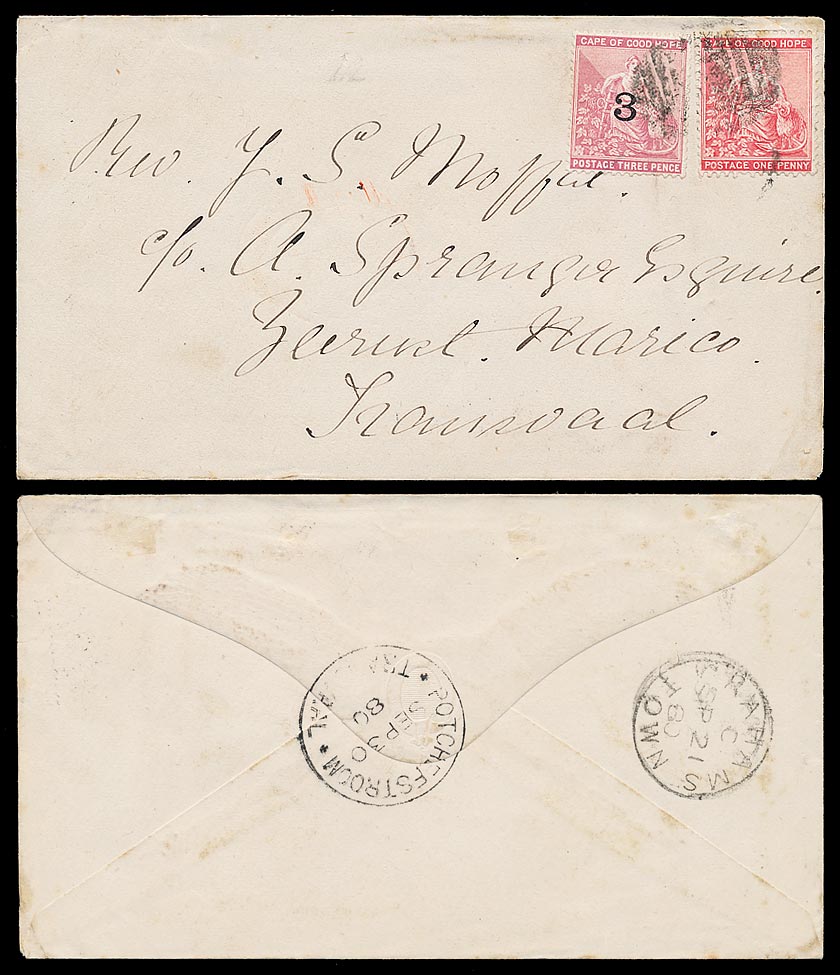BECHUANALAND
Postal History, Postmarks
POSTAL HISTORY
|
 |
| AB4163 |
Cape of Good Hope 1880 (21st September), incoming envelope from Grahams Town, Cape Colony. Bearing Cape 1d carmine-red and ‘3’ surcharge on 3d pale dull rose (SG 29, 37) tied by an unclear ‘3’ Barred Oval Numeral Canceller of Grahams Town. Addressed to ‘Rev J. S. Moffat / c/o A Spranger Esquire / Zeerust. Marico / Transvaal’. Backstamped with originating GRAHAMS TOWN (21 Sep) single circle datestamp and POTCHEFSTROOM / TRANSVAAL (30 Sep) transit datestamp. Remarkably fine condition and a rare example of early incoming mail, over five years before the territory was proclaimed a Protectorate on the 30th September, 1885.
Note: this item would have travelled into Bechuanaland via Zeerust utilising a service operated by missionaries based at Linokana in the ZAR and at Kanye in Bechuanaland.
John Smith Moffat was born on the 10th March 1835 in Kuruman. He was the fourth son (of ten children) of the missionary Dr. Robert Moffat who had re-established a mission station at Kuruman in the early 1820s. He joined the London Missionary Society in 1858 and married Emily Unwin the same year and was the brother-in-law of David Livingstone. His father settled him at Inyati in 1859, where he lived for six years and helped start the first mission in Matabeleland. In 1865 he took over the running of his father’s mission in Kuruman and was the London Missionary Society's representative amongst the Bechuanas. In 1879 he resigned from the missionary society and joined the British colonial service. In 1884 he became the Assistant Commissioner to Sir Sidney Shippard in Bechuanaland and in early August 1888 he organised the Mafeking-Gubulawayo Runner Post between Bechuanaland and Matabeleland which covered a distance of nearly 500 miles.
|
| £650 |
|